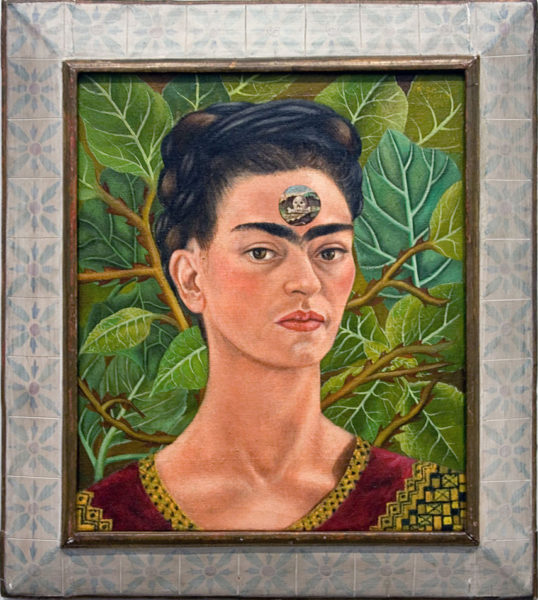 Frida Kahlo, Thinking About Death, 1943, oil on canvas, 17.5
Frida Kahlo, Thinking About Death, 1943, oil on canvas, 17.5
Frida Kahlo’s compelling surrealist self-portraits that are filled with personal iconography have a broad relevance. Her work was championed by early feminists who adopted the slogan “the personal is political,” meaning that one woman’s experience is representative of the experiences of many women as a reflection of the larger social and political context.
The Mexican artist claimed to have suffered two great tragedies in her life. The first was a terrible bus accident she was in when she was young in which she suffered near fatal injuries that caused her pain for the remainder of her life. The second was to fall in love with the famous artist Diego Rivera, a notorious womanizer, with whom she had a volatile marriage.
Frida Kahlo painted Thinking About Death near the end of her life when she spent most of her days in bed because of tremendous physical pain. In the image, she depicts a skull and crossbones on her forehead to show her preoccupation with death and release. Behind her is a tangle of thorny branches that symbolize rebirth in ancient Mexican mythology.